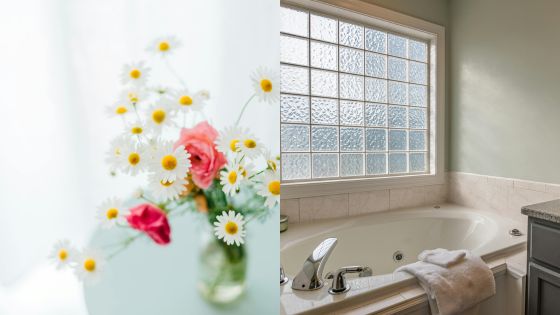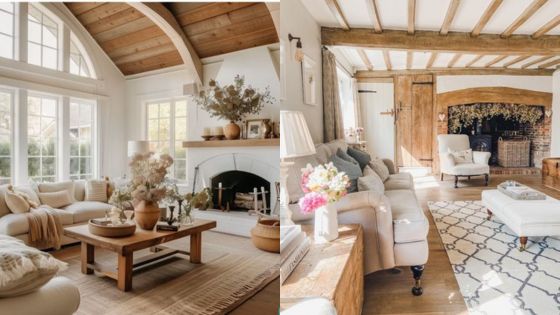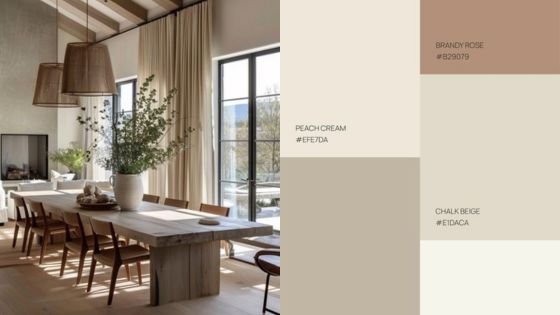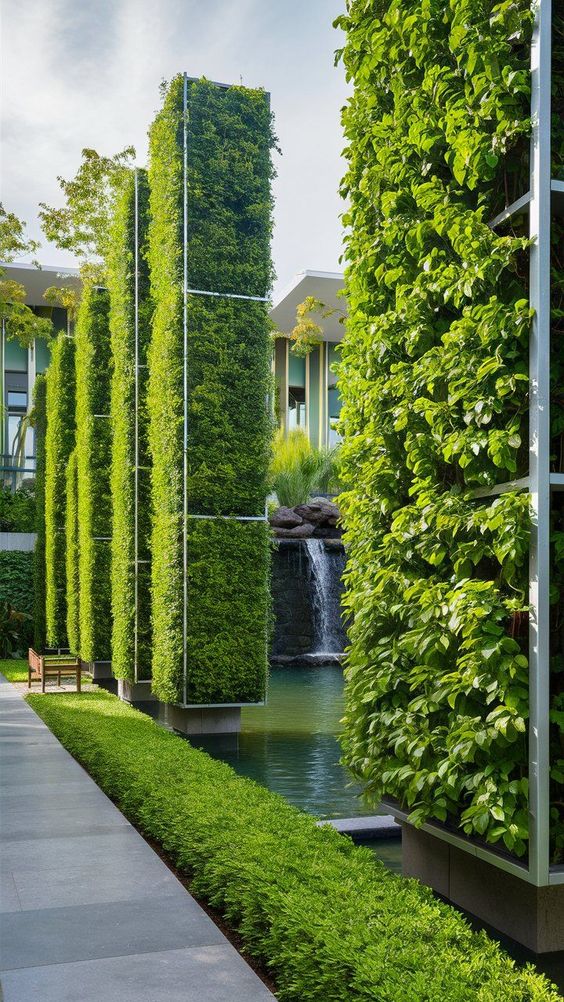
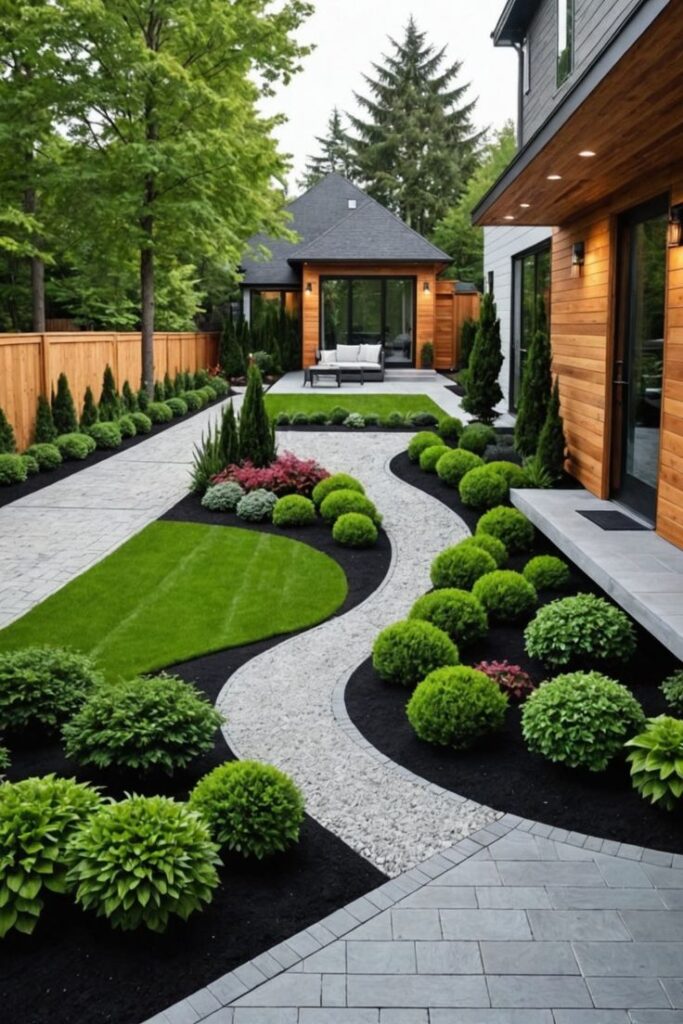
Creating a beautiful landscape involves more than just planting flowers. Landscape design incorporates elements such as plant selection, layout, and hardscaping to create harmonious and functional outdoor spaces. Whether it’s a front yard that welcomes visitors or a serene backyard retreat, effective landscape design can transform any property.
Designers consider various factors such as space, climate, and personal style when crafting a landscape. By thoughtfully selecting plants and materials, they can enhance the natural beauty of an area while ensuring that it meets the needs of its users. A well-designed landscape not only boosts curb appeal but also offers a sustainable environment for future enjoyment.
Investing in professional landscape design services can significantly boost your property’s curb appeal and value. A well-planned landscape not only enhances the visual appeal but also contributes to the long-term value of your home, making it more attractive to future buyers
Understanding how to implement and maintain these designs is crucial for lasting beauty. Sustainable practices and regular upkeep ensure that landscapes thrive over time, adapting to changing conditions and preferences. With the right knowledge, anyone can turn their vision into a reality.
Key Takeaways
- Landscape design combines aesthetics with functionality for outdoor spaces.
- Plant and material selection is essential for sustainability and beauty.
- Regular maintenance ensures longevity and adaptability of landscape designs.
Understanding Landscape Design
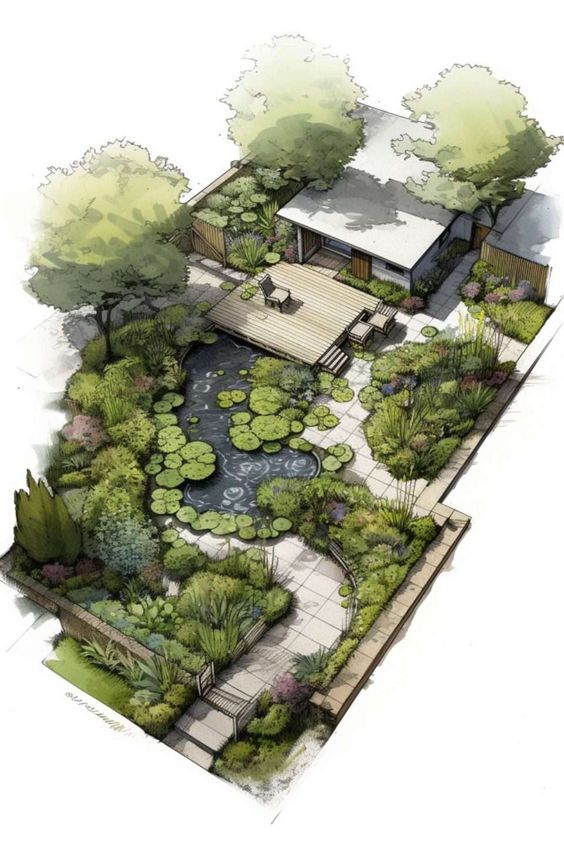
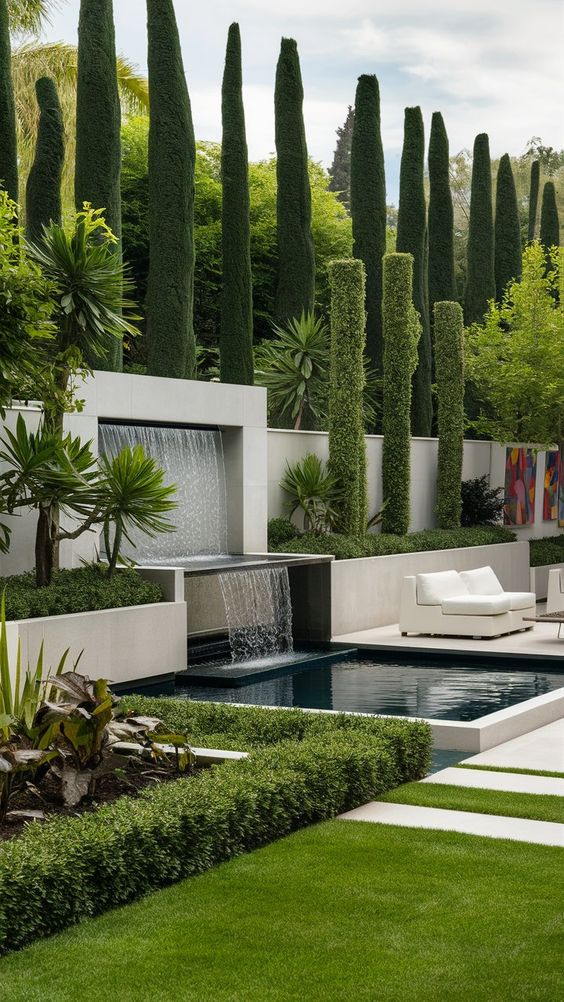
Landscape design involves creating outdoor spaces that are both functional and aesthetically pleasing. It encompasses principles that focus on unity and balance while emphasizing the importance of form and line in the design process.
Principles of Landscape Design
The principles of landscape design are foundational concepts that guide the arrangement of outdoor elements. Unity ensures that all components work together harmoniously, creating a cohesive look.
Balance refers to the visual equilibrium in a space, which can be symmetrical or asymmetrical. Designers often employ various forms—such as geometric shapes or organic lines—to enhance natural beauty and facilitate movement.
In addition, incorporating color and texture further enriches the design, ensuring that all aspects complement one another effectively.
The Role of Balance and Unity
Balance and unity play critical roles in landscape design. Achieving balance can involve positioning elements in such a way that they create a feeling of stability.
Symmetrical balance may replicate the same elements on either side of a central point, while asymmetrical balance uses different elements that still hold visual weight.
Unity ties all components together, fostering an integrated appearance across the landscape. By using repeating elements—like plants, materials, and structures—designers can reinforce this sense of unity, making a space feel complete.
Incorporating Form and Line
Form and line are essential elements that guide the eye through a landscape. Form refers to the shape of the plants, pathways, and structures, contributing to the overall silhouette of the design.
Lines, whether straight or curved, lead viewers through the space and create visual interest. Designers strategically use lines to emphasize certain features or to define boundaries between different areas, influencing how a space is experienced.
Utilizing both form and line effectively can transform a landscape into a dynamic, engaging environment.
Designing for Your Space
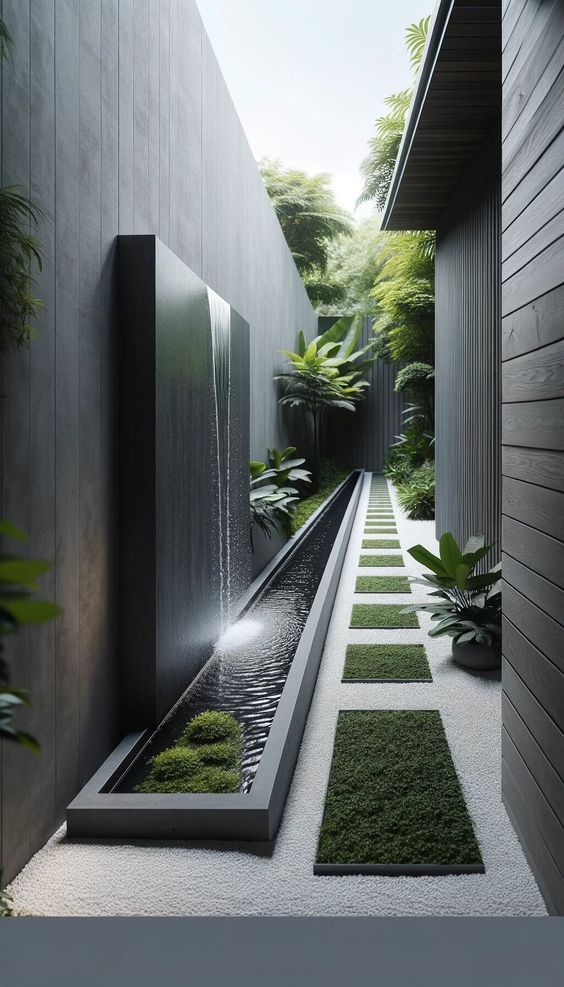
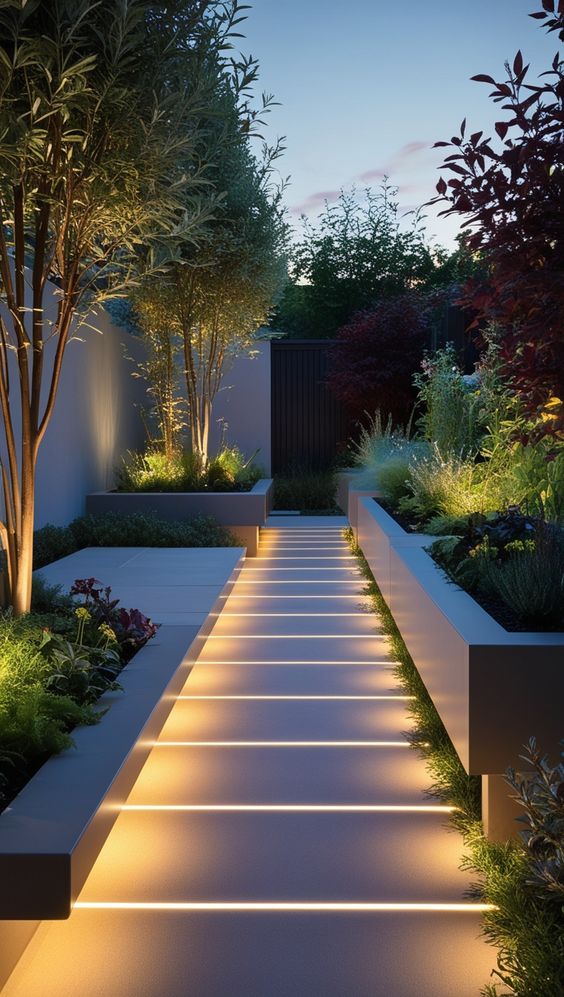
Creating a functional and aesthetically pleasing landscape involves careful consideration of the specific features of an outdoor space. Key factors include evaluating the area, understanding sun and shade patterns, and working with varying slopes and levels. Each of these elements plays a crucial role in successful landscape planning.
Evaluating Your Outdoor Area
A thorough assessment of the outdoor space is essential for effective landscape design. This includes measuring the property size, noting existing features such as trees, pathways, and structures, and identifying any potential challenges like poor drainage or dense shade. A quality landscape design company in John’s Creek ga will be more than a welcome helping hand if you’re struggling with ideas. Experienced professionals may offer some much-needed perspective on how to best combine practicality with breathtaking outdoor design
Consider the microenvironments within the outdoor area. Different sections may experience varying levels of sunlight, moisture, and wind exposure. This can impact plant choices and placement.
Creating a detailed site plan can help visualize the layout. Take note of factors like proximity to the home and potential views that enhance the property’s appeal.
Planning for Sun and Shade Patterns
Understanding sun and shade patterns throughout the day and across seasons is critical for plant selection and placement. Observing which areas receive full sun, partial shade, or complete shade will guide choices in vegetation.
Sunlight hours should be tracked to determine suitable plants. For example:
- Full Sun: 6+ hours sunlight (e.g., lavender)
- Partial Shade: 3-6 hours sunlight (e.g., hostas)
- Full Shade: Less than 3 hours sunlight (e.g., ferns)
Additionally, consider how nearby structures or trees cast shadows throughout the day. These patterns change seasonally, influencing plant health and growth.
Working with Slopes and Levels
Slopes and varying levels can impact the design and functionality of the landscape. Properly addressing these elements enhances both aesthetics and usability.
Terracing can be an effective solution for steep slopes. This method creates flat surfaces for planting, making it easier to maintain plants and preventing soil erosion. Incorporate steps or pathways that provide access while respecting the natural terrain.
Erosion control is another critical consideration. Using native plants with deep root systems can stabilize soil. Selecting appropriate ground cover can also prevent runoff and preserve soil moisture.
Utilizing retaining walls can effectively manage different levels while adding visual interest. This approach contributes to a structured landscape that complements the home and surrounding property.
Selecting Plants and Hardscape
Careful selection of plants and hardscape elements is essential in landscape design. These choices contribute to both the aesthetics and functionality of outdoor spaces.
Choosing the Right Plants
When selecting plants, consider climate, soil type, and sunlight exposure. Native plants often require less maintenance and water, making them a sustainable choice.
Key factors include:
- Trees: Consider height, spread, and root system. Larger trees provide shade but might require more extensive space.
- Flowers: Seasonality is important; choose a mix of perennials and annuals for year-round color.
- Shrubbery and Hedges: These can be used to define spaces or provide privacy. Select varieties that fit the desired height and density.
Balancing aesthetics with functional needs ensures a thriving garden.
Incorporating Hardscape Elements
Hardscape elements, such as patios, walkways, and retaining walls, enhance usability. Materials like stone, brick, or concrete can unify outdoor areas.
Important tips:
- Patios and Decks: Placement matters. They should connect seamlessly with both house entrances and garden pathways.
- Walkways: Choose durable materials that withstand weather changes. Design them for both accessibility and flow throughout the garden.
- Retaining Walls: They can create tiered gardens or prevent erosion. Select materials that complement surrounding vegetation.
Incorporating these elements can improve the overall structure of the landscape.
Garden Design and Planting Trends
Current trends favor sustainable gardening practices and minimalist designs. Incorporating ecological features appeals to environmentally-conscious homeowners.
Popular trends include:
- Drought-resistant plants: These minimize water use and thrive in dry conditions.
- Edible gardens: Incorporating fruits and vegetables adds utility along with beauty.
- Naturalistic designs: These mimic natural landscapes, promoting biodiversity.
Adapting to these trends can enhance both the visual appeal and sustainability of any landscape design.
Landscape Features and Decor
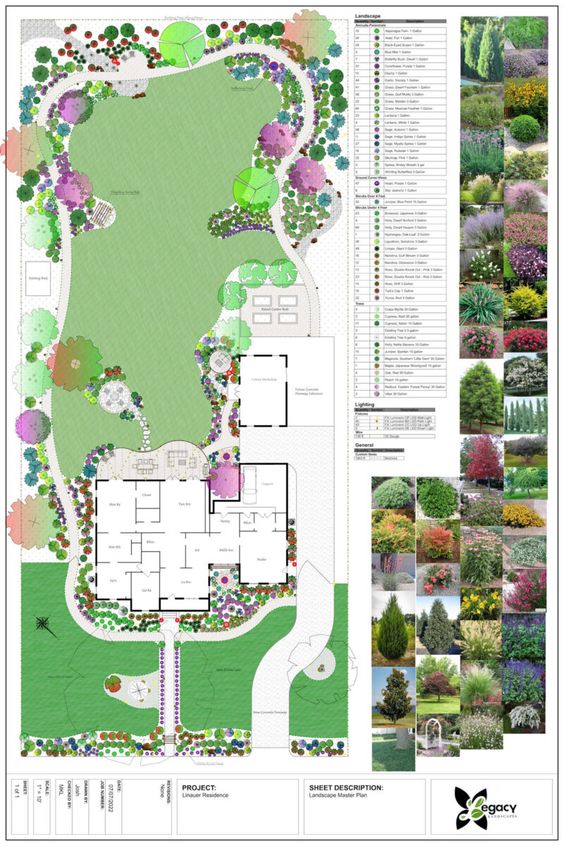
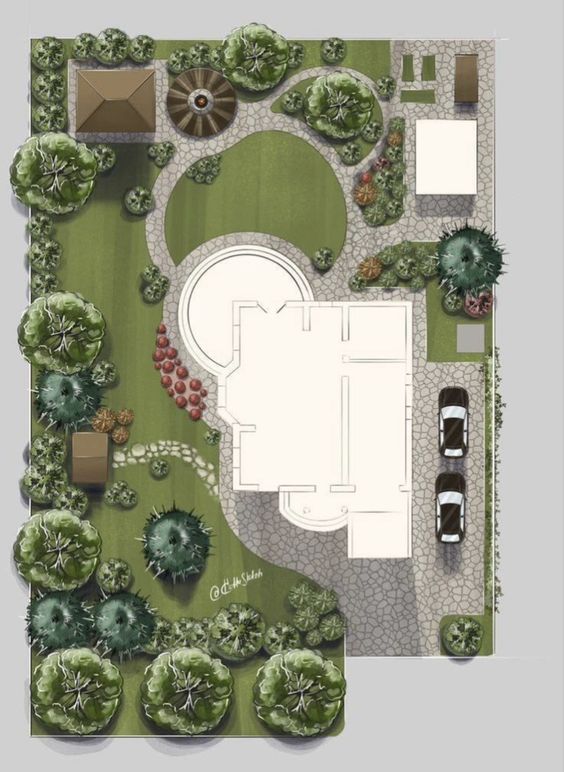
In landscape design, the selection of features and decor significantly impacts the functionality and aesthetics of outdoor spaces. Key elements include water features, lighting, furniture, and structural components such as fences and pergolas that enhance both beauty and utility.
Adding Water Features and Pools
Water features, such as fountains, ponds, or swimming pools, introduce tranquility and movement to a landscape. Pools provide recreational opportunities and can serve as a stunning focal point.
Adding a fountain can create soothing sounds and attract wildlife.
When considering water features, it’s essential to assess the integration with existing plants and garden layouts.
Selecting the right materials, like natural stones or tiles, improves durability and matches the overall style. Regular maintenance is critical to ensure these features remain clean and functional.
Lighting and Furniture Choices
Proper lighting enhances safety and ambiance in outdoor spaces. Soft landscape lighting can illuminate pathways, highlight plants, and create a welcoming atmosphere.
Options include solar-powered or low-voltage lights, which are energy-efficient and easier to install.
In addition to lighting, choosing suitable outdoor furniture is crucial for comfort and functionality. Weather-resistant materials like teak or metal ensure longevity.
Furniture should align with the intended use of the space, such as dining or lounging areas, often complemented by cushions and decor items to add warmth.
Fences, Pergolas, and Walkways
Fences serve dual purposes of security and privacy while defining boundaries. Different materials, like wood, vinyl, or wrought iron, can enhance a landscape’s aesthetic. For homeowners in Avon looking for expert installation, Cox Fence offers high-quality fencing solutions designed to withstand local weather conditions while enhancing curb appeal and security.
Pergolas provide shade and structure, creating an inviting atmosphere for outdoor dining or relaxation. They can be adorned with climbing plants or lights for added charm.
Walkways guide visitors through the space, connecting different areas while enhancing accessibility. Material choices, such as stone, brick, or gravel, impact both function and design, contributing to the overall landscape harmony.
Front Yard and Backyard Design
Designing front and backyards effectively enhances both aesthetics and functionality. Careful planning can create inviting spaces that reflect personal style and meet practical needs.
Maximizing Curb Appeal
Curb appeal sets the tone for any property. It is essential for creating a positive first impression. Key elements include:
- Landscaping: Incorporate diverse plants that bloom in different seasons. A combination of perennials and annuals can bring year-round color.
- Pathways: Design clear, inviting walkways leading to the entrance. Materials such as stone or brick can add texture and visual interest.
- Lighting: Use soft exterior lighting to highlight landscaping features and ensure safety after dark. Consider solar lights along paths or uplighting for trees.
These elements together create an attractive facade that enhances property value.
Private Outdoor Living Areas
Backyards offer opportunities for creating private retreats. A well-designed space should consider comfort and leisure.
- Seating Areas: Install comfortable furniture in shaded spots. Options like pergolas or umbrellas can enhance relaxation.
- Fire Pits: A central fire pit can serve as a gathering point. It provides warmth and ambiance for evening gatherings.
- Gardens: Incorporate a personal garden or green space. Raised beds or vertical gardens maximize space, allowing for culinary herbs or flowers.
Creating zones within the yard promotes relaxation and encourages outdoor enjoyment.
Structures and Functional Spaces
Incorporating structures can add both beauty and function to yard designs. The right elements enhance usability and aesthetic appeal.
- Sheds: These can provide storage for tools and outdoor equipment. Choose styles matching the main house for cohesive design.
- Decks and Patios: Building a deck or patio allows for dining and entertaining. Materials like composite decking or natural wood offer durability and style. To ensure quality construction and a design that fits your space, consider hiring professional deck builders near me who can bring your outdoor vision to life.
- Pergolas and Arbors: Adding vertical elements such as pergolas enhances visual interest. They create shaded areas for outdoor gatherings and climbing plants.
These structures not only improve functionality but also create inviting spaces for social interaction.
Implementing the Landscape Design
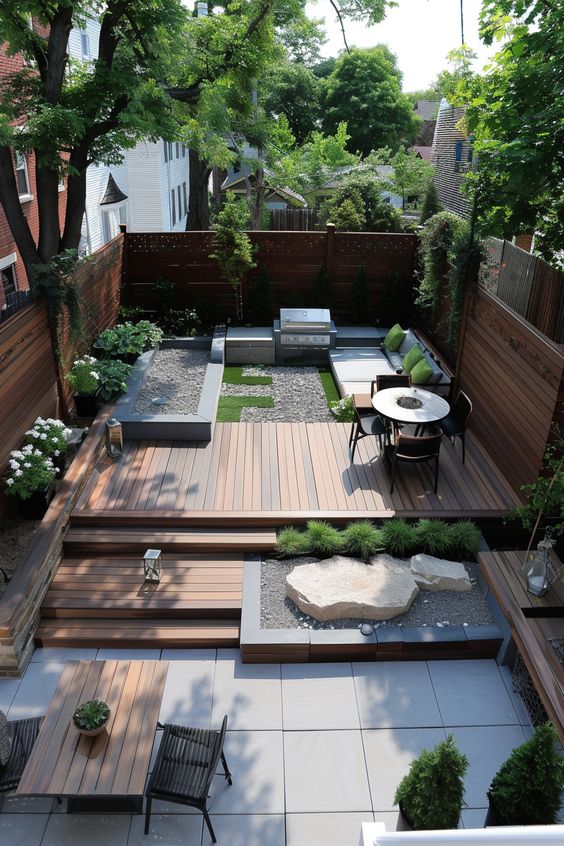
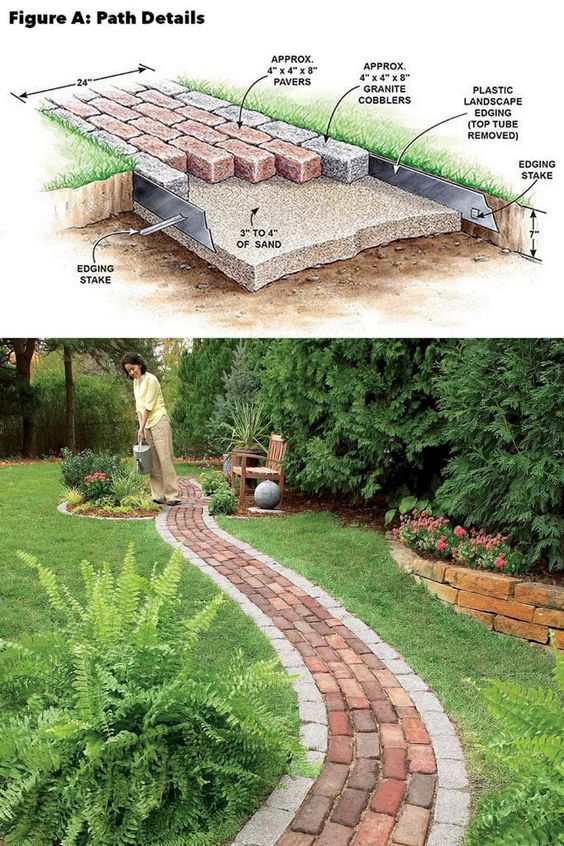
Successful landscape design implementation involves a structured approach. Key aspects include understanding the design process, selecting a capable landscape designer, and effectively budgeting for contractors. This ensures a smooth transition from concept to reality.
The Landscape Design Process
The landscape design process includes several critical phases: site analysis, conceptual design, and detailed planning. Initially, the designer assesses the site, noting factors like sunlight, soil quality, and existing vegetation. This information shapes the landscape plan, ensuring it fits the environment and client needs.
Next, conceptual design features sketches and ideas for layout, plant selection, and materials. Once finalized, detailed planning incorporates precise measurements, material specifications, and construction timelines. This structured approach helps anticipate challenges and streamline installation, ultimately resulting in a cohesive and functional outdoor space.
Choosing the Right Landscape Designer
Selecting a qualified landscape designer is essential for successful implementation. It is advisable to review portfolios and check for experience relevant to the project. A good designer balances aesthetics with functionality, creating space that meets the client’s vision.
Look for professionals with certifications or affiliations with accredited organizations. Client testimonials and reviews can provide insights into the designer’s reliability and creativity. Initial consultations are critical for discussing project goals, timelines, and budgets. This ensures alignment on expectations before work begins.
Budgeting and Working with Contractors
Budgeting plays a vital role in project success. Establish a clear financial plan that encompasses design fees, materials, and labor costs. Landscape contractors often provide estimates, which can guide budgeting conversations. Be transparent about financial constraints to align on feasible solutions.
Working effectively with contractors involves clear communication and defined roles. Outline installation timelines, specific tasks, and deadlines. Regular check-ins can help address issues promptly. It’s important to monitor work quality to ensure it aligns with the agreed landscape plan. This collaborative approach results in a successful implementation that meets the client’s goals.
Maintenance and Sustainability
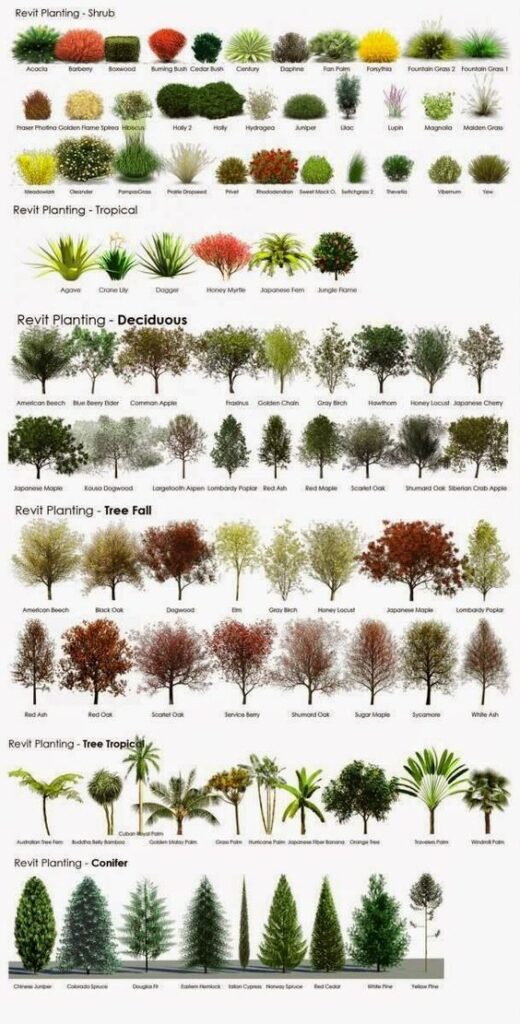
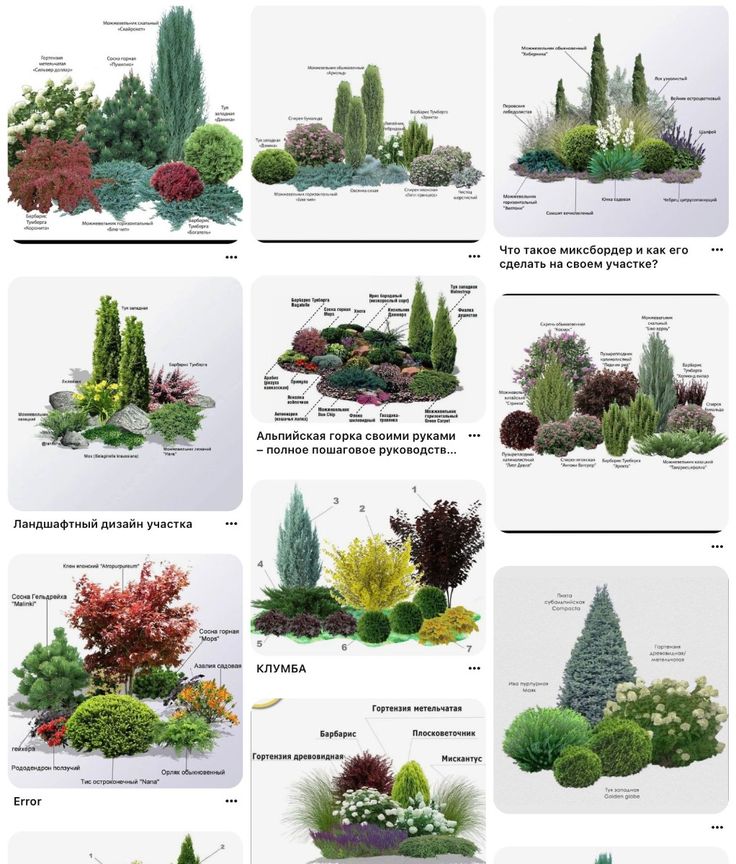
Effective maintenance and sustainable practices are crucial for a successful landscape design. Regular upkeep, efficient irrigation, and climate-responsive strategies contribute significantly to the longevity and health of outdoor spaces.
Regular Upkeep and Gardening
Regular maintenance includes tasks such as weeding, pruning, and mulching. These activities not only enhance the aesthetic appeal but also assist in plant health.
Key tasks for maintenance:
- Weeding: Reduces competition for resources.
- Pruning: Encourages healthy growth and removes dead parts.
- Mulching: Retains moisture and suppresses weeds.
Creating a maintenance schedule is essential. This ensures timely management of landscape elements and promotes a thriving environment. Using native plants can also reduce maintenance needs, as they are typically more resilient and require less care.
Irrigation and Water Management
Efficient irrigation systems are vital for maintaining healthy landscapes. Drip irrigation or soaker hoses help deliver water directly to plant roots, minimizing evaporation and runoff.
Water management tips:
- Soil moisture sensors: Notify when to water.
- Rain barrels: Collect rainwater for reuse.
- Drought-resistant plants: Minimize water usage.
By focusing on water conservation techniques, a landscape can thrive even in challenging weather conditions. Implementing smart irrigation schedules based on weather forecasts can optimize water use, promoting sustainability.
Sustainable Practices and Climate Considerations
Sustainability in landscape design involves selecting materials and practices that are eco-friendly. Choosing sustainable materials, such as recycled stone or environmentally friendly mulch, can reduce the carbon footprint of a project.
Incorporating climate considerations is also essential. Strategies like planting trees provide shade and reduce energy costs.
Sustainable actions include:
- Composting: Enriches soil health naturally.
- Rain gardens: Manage stormwater and enhance biodiversity.
- Xeriscaping: Reduces water needs by selecting drought-tolerant plants.
These practices not only promote sustainability but also create resilient landscapes that adapt to changing climate conditions.
Case Studies and Inspiration
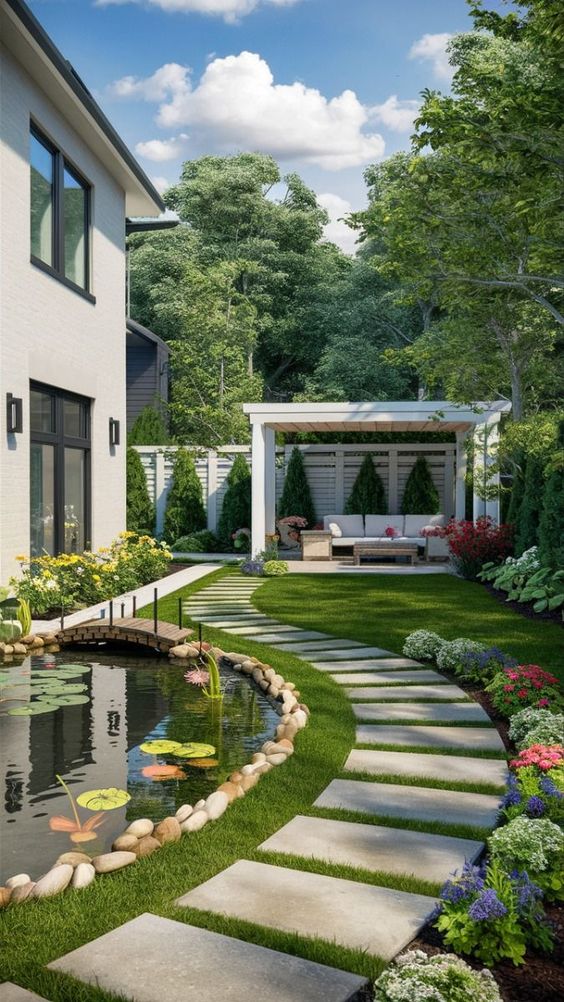
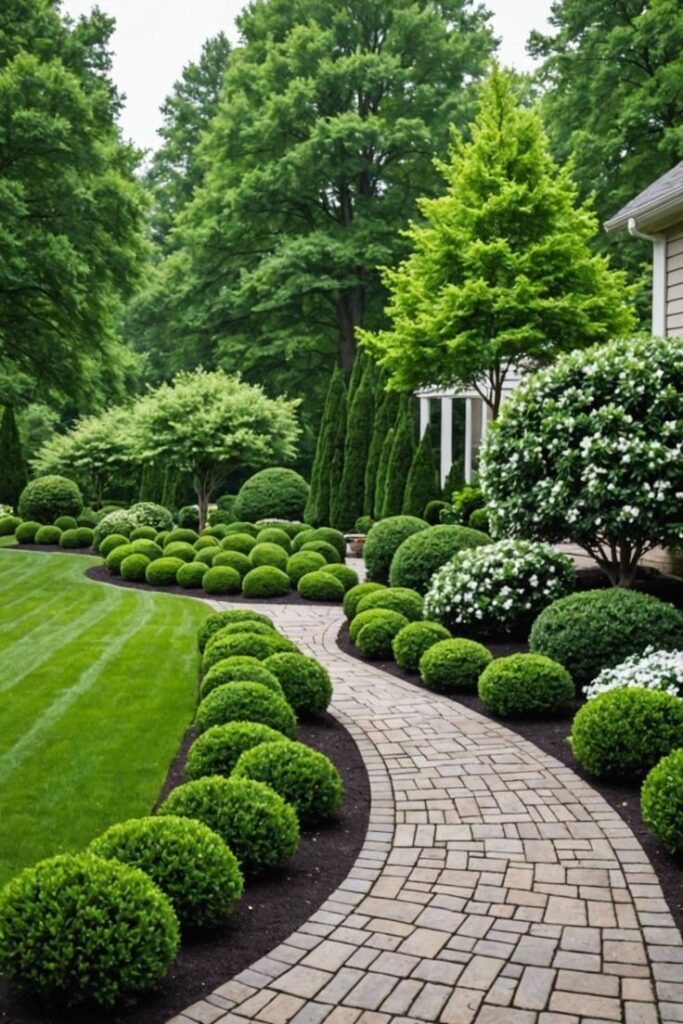
Examining successful landscape design projects can provide valuable lessons and inspiration. These case studies highlight innovative uses of space and materials, revealing effective strategies that enhance both aesthetics and functionality.
Residential Landscape Success Stories
One noteworthy case study is the transformation of a suburban backyard in Austin, Texas. The homeowners wanted to create an inviting outdoor space for family gatherings and entertainment. The landscape architect used native plants, which require less water and maintenance, creating a sustainable environment.
A key feature included a custom-built pergola that offers shade and a focal point for the area. Additionally, a combination of stone pathways and raised garden beds added structure and visual interest. The project successfully balanced aesthetics with practicality, demonstrating how thoughtful landscape design can enhance residential spaces.
Innovative Uses of Space and Materials
In an urban setting, a landscape architect revitalized a neglected rooftop in New York City. The makeover involved using lightweight planters and modular seating, transforming the rooftop into a vibrant community space.
Sustainable materials, such as recycled wood for benches, reduced the environmental impact. The design also incorporated a rainwater collection system, which supplied irrigation for the plants. This project exemplifies how limited space can be maximized through innovative design, encouraging community interaction while promoting green living.
Tools and Resources
In landscape design, utilizing the right tools and resources is essential for creating effective and aesthetically pleasing spaces. Online tools and comprehensive literature can significantly aid designers in their projects.
Online Landscape Design Tools
A variety of online landscape design tools cater to different needs. Software such as SketchUp and AutoCAD allows designers to create detailed 3D models. These tools provide precise measurements and help visualize the design before implementation.
Free options like Garden Visualizer and SmartDraw offer user-friendly interfaces for quick layouts. Many platforms include plant databases, enabling users to select appropriate flora based on climate and soil conditions.
Mobile applications, such as iScape, facilitate designs from anywhere. These tools help clients visualize the final project effectively, enhancing communication between designers and clients.
Books and References for Further Reading
Books on landscape design provide invaluable insights and methodologies. Titles such as “Landscape Graphics” by Grant W. Reid and “The Landscape Design Sourcebook” by Julia M. E. Hargreaves offer techniques and visual ideas.
Scholarly articles and journals like “Landscape Journal” provide research-based perspectives on current trends and innovations in the field. Online resources, including the American Society of Landscape Architects (ASLA) website, offer valuable data and reference materials.
Textbooks covering ecological principles can also enrich understanding. Purchasing or accessing these materials from local libraries ensures comprehensive knowledge of design principles, plant selection, and environmental considerations.
- 1.0Kshares
- Facebook0
- Pinterest1.0K
- Twitter3
- Reddit0

